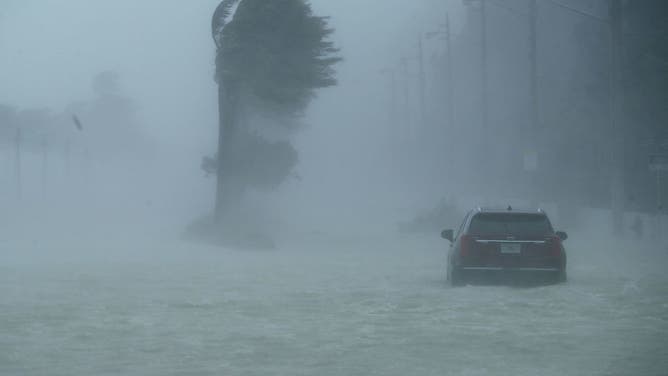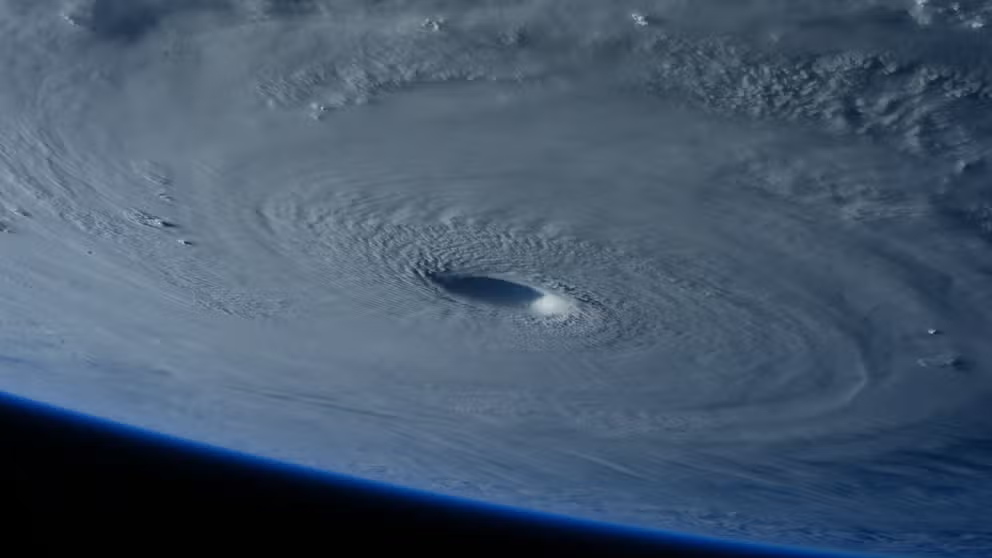What is an 'Extreme Wind Warning'?
A hurricane has to reach at least Category 3, bringing sustained winds on land of at least 115 mph, to qualify for an Extreme Wind Warning. To compare, traditional High Wind Warnings are issued when sustained winds reach 40 mph or gusts reach 58 mph.
How to ride out a hurricane if you didn't evacuate
A hurricane is barreling toward the coast and you’re trying to decide whether you should evacuate or hunker down at a home.
When a dangerous major hurricane is making landfall, the National Weather Service will issue one of its most dire warnings available: an "Extreme Wind Warning."
The warning signals when the storm's destructive eyewall is imminent, lashing the area with the storm's peak winds.

An Extreme Wind Warning graphic for Hurricane Ida issued on Aug. 26, 2020.
(NOAA)
A hurricane has to reach at least Category 3, bringing sustained winds on land of at least 115 mph, to qualify for an Extreme Wind Warning. To compare, traditional High Wind Warnings are issued when sustained winds reach 40 mph or gusts reach 58 mph.
DIDN'T EVACUATE? HERE'S HOW TO RIDE OUT A HURRICANE

FORT LAUDERDALE, FL - SEPTEMBER 10: A car sits abandoned in storm surge along North Fort Lauderdale Beach Boulevard as Hurricane Irma hits the southern part of the state September 10, 2017 in Fort Lauderdale, Florida.
(Photo by Chip Somodevilla/Getty Images / Getty Images)
An Extreme Wind Warning will trigger the Emergency Alert System and warn those in the path that a life-threatening situation is underway.
"Treat these imminent extreme winds as if a tornado was approaching and move immediately to the safe room in your shelter," the NWS will write in the warning. "Take action now to protect your life!" Only unlike a tornado that lasts moments, an onslaught from a hurricane's eyewall can last several to dozens of minutes.
What to do when an Extreme Wind Warning is issued?
The best thing you can do to protect yourself and your family during an extreme wind event is to put as many walls between you and the outside as you can, according to NOAA.
An interior room without windows, such as an interior bathroom, is the best place. For even added protection, ensure everyone wears a helmet, and if feasible, cover yourself with a mattress for an added layer of protection.
National Hurricane Center Director breaks down hurricane safety
National Hurricane Center Director Mike Brennan joins FOX Weather to talk about the dangers of hurricanes and to detail how the hurricane center helps provide essential information during hurricane season to those in the path of storms.
HOW TO STAY SAFE AFTER A HURRICANE
Even if your home's frame withstands the wind onslaught, blown debris can be carried like missiles through windows or the home's siding.
Also, be mindful that if your area ends up inside the eye that the storm is only half done, and the brief calm period will rapidly deteriorate to extreme conditions once again on the other side of the storm's eyewall. Don't venture outside until you know the storm has passed and the winds have subsided.

